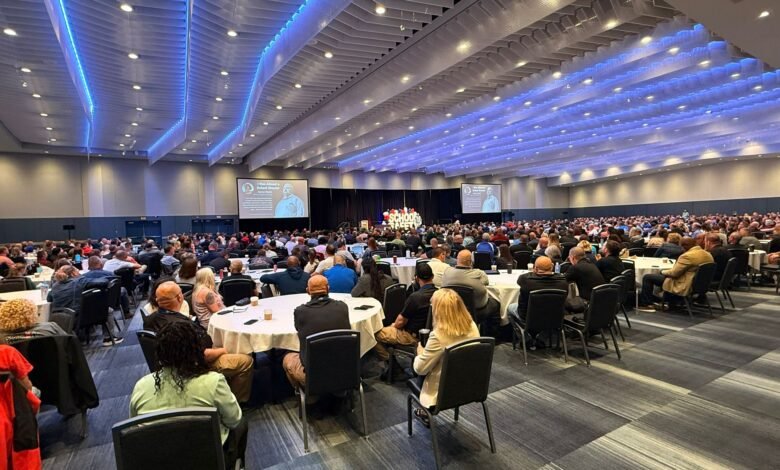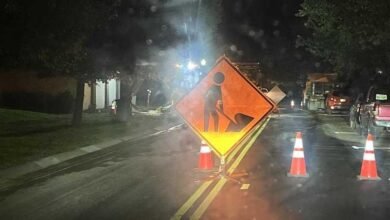Shaping Safer Schools: Inside Ohio’s 2025 School Safety Summit

In a time when school safety concerns are mounting across the United States, the Ohio School Safety Center (OSSC) convened a landmark summit on June 10–11, 2025, drawing together educators, safety officers, mental health professionals, legal advocates, and policymakers. Held at the Greater Columbus Convention Center, the event served as a crucible of innovation, urgency, and resolved a determined response to growing threats facing students in both physical and digital spaces.
Across two days, the summit delivered powerfully curated keynote addresses, targeted breakout sessions, and meaningful networking opportunities, all geared toward equipping stakeholders with practical tools, fresh insights, and renewed conviction to safeguard learning environments.
Keynotes That Stirred the Room
Each day began with compelling keynote presentations, grounding the summit in lived realities and research-backed insight.
Day 1: “I Was Almost a School Shooter” – Aaron Stark
In a gripping and unexpectedly uplifting account, Aaron Stark, now a mental health and gun control advocate, traced his childhood of abuse and despair to the brink of a school shooting. What diverted his course? A single act of kindness. Stark’s message was a powerful testament to the life-saving potential of human connection, empathy, and early intervention.
Joint Case Study: The Oxford High School Shooting: Led by Erin Langill of FLETC Law Enforcement, this session deconstructed the behavioral pathway of the 15-year-old perpetrator of the 2021 Oxford High School shooting. The analysis offered clear warning signs that were overlooked and emphasized the need for proactive behavioral threat assessments in schools.
Day 2: “School Shooters and Adverse Childhood Experiences” – Andrew Campbell
Drawing from the analysis of 58 school shootings since 1990, Andrew Campbell of Campbell Research & Consulting explored how early childhood trauma, especially harm within the home, increases the risk of violent behavior in the community. Campbell underscored the link between systemic neglect and school-based violence, calling for holistic interventions that begin long before tragedy strikes.
Breakout Sessions: A Panoramic View of School Safety Challenges and Solutions
Attendees could choose from a wide range of breakout sessions tailored to specific fields. I personally attended six standout sessions, each illuminating and relevant:
1. Bullying in the Era of Social Media – Daniel J. Flannery, Case Western Reserve
This session delivered updated findings from the National Academies on bullying prevalence, impact, and the rise of cyberbullying. Flannery outlined policy responses and prevention strategies, while calling for a cultural shift in both schools and homes to curb the psychological damage caused by digital harassment.
2. Female Mass Attackers – Erin Langill, FLETC
Challenging traditional gender narratives, this eye-opening session spotlighted female perpetrators of mass violence. Langill presented case studies highlighting behavioral indicators and motivations, urging a more nuanced and inclusive threat assessment approach. especially as trauma, social exclusion, and radicalization increasingly impact girls in silent ways.
3. Conducting Security and Vulnerability Assessments – Katie Collins, OSSC
This hands-on session offered a step-by-step framework for assessing and strengthening school security infrastructure. From surveillance blind spots to procedural weaknesses, Collins laid out practical methods for schools to conduct annual reviews and implement both cost-free and funded improvements.
4. Active Listening Skills for School Leaders – Kevin Berthia & Kevin Briggs
Berthia and Briggs revisited their powerful real-life encounter on the Golden Gate Bridge, where Briggs used active listening to save Berthia’s life. Their session reframed listening as a life-saving skill in school safety. Students often cry out in subtle ways, are adults truly listening?
5. Street Law: Legal Empowerment for Students – Dave McConnell
This session was both enlightening and empowering. McConnell introduced Street Law as a method of teaching students their rights, responsibilities, and legal realities through real-world examples. Far from theoretical, this initiative is a civic tool for preventing vulnerability and fostering responsible citizenship.
6. Protecting Students Online – Emily Fagan-Zirm, Ohio ICAC Task Force
Focused on digital threats such as sextortion, grooming, and cyberbullying, this session unpacked current risks, warning signs, and ethical concerns surrounding digital learning environments. It emphasized the urgency of embedding digital safety education into school culture and curriculum.
Connections That Mattered
Beyond content, the summit fostered meaningful networking moments. I interacted with school leaders, law enforcement officials, and fellow advocates from across Ohio and beyond. These interactions were not just cordial, they were catalytic, offering fresh collaborations and resource-sharing opportunities.
From Policy to Practice: Why This Matters
Having worked across Africa and the United States in child safeguarding and family law, I found this summit not only validating but catalytic. It reaffirmed several enduring truths:
- Safety must become a culture, not merely a protocol. Paper policies are not enough. The real work is in what we practice daily, what we normalize, and what we refuse to ignore.
- The human angle is the main angle. Systems are critical, but systems are run by people. The story of keynote speaker Aaron Stark, a young man who was almost a school shooter but was pulled back from the brink by a simple act of kindness, reminds us that connection saves lives. Emotional intelligence, empathy, and attentiveness are not side notes, they are the headline.
- Every stakeholder is a duty-bearer. School safety is not the job of law enforcement alone. Teachers, parents, counselors, administrators, and even students must all see themselves as responsible actors in this shared mission.
- Hope is not naïve, it is organized. We do not wait for better days; we build them, intentionally and together.
- The devil is in the details we overlook. Small lapses often precede major tragedies. A missed red flag, a delayed intervention, a gap in surveillance, these are not minor. Vigilance is the price of liberty. When we pay attention to the little things, we prevent the big ones.
Model Worth Emulating
The Ohio School Safety Center deserves high commendation for curating a summit that was not only timely but timeless. Its balance of policy depth, human stories, and practical training offers a replicable model for regions grappling with school safety challenges.
As I left the summit, one phrase echoed in my heart:
“Safe schools don’t happen by chance. They are built—intentionally, collaboratively, and courageously.”





